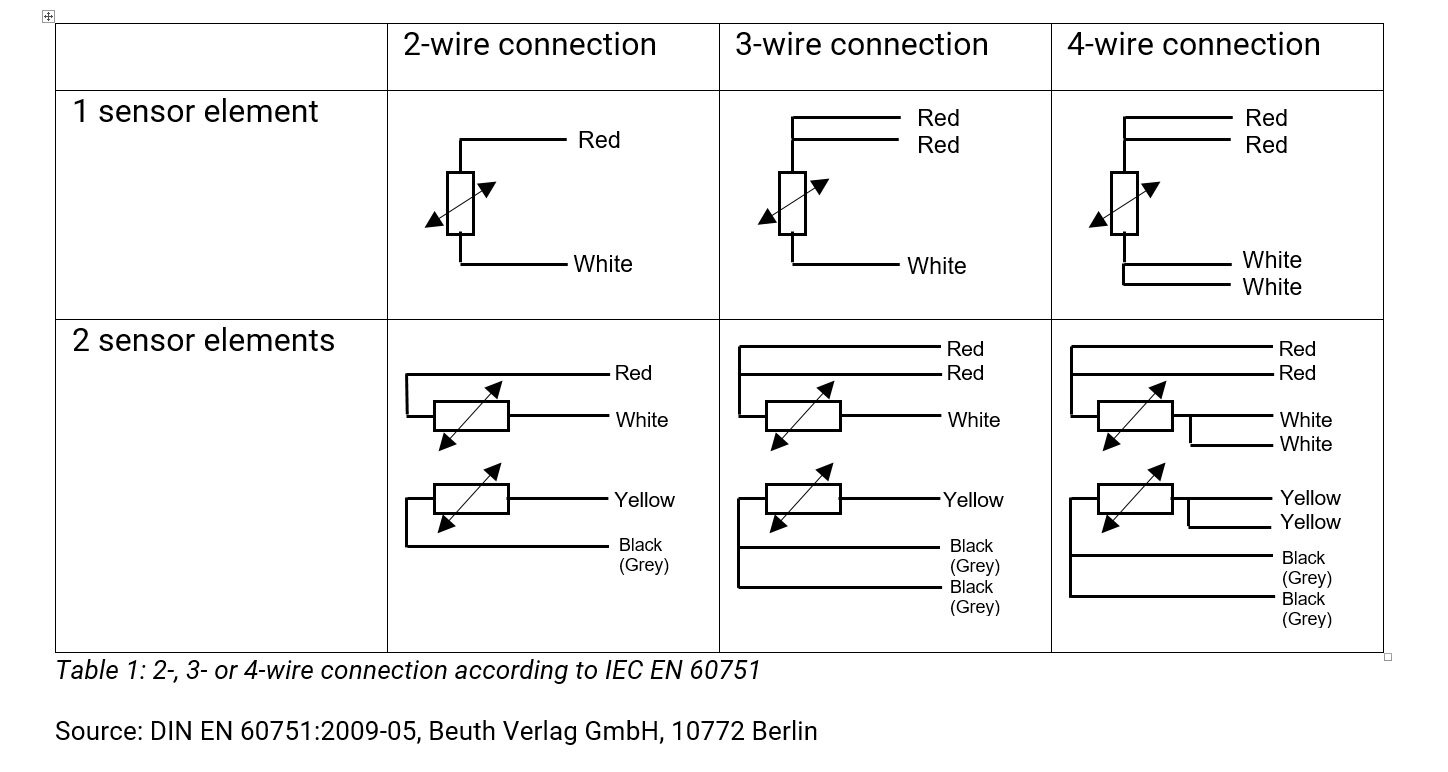2, 3 and 4-Wire Circuit With Pt100 / Pt1000


In our temperature sensor data sheets, you always find out whether the temperature sensor is configured in a 2, 3 or 4-wire circuit. What exactly does this mean, though?
Pt100 or Pt1000 sensor elements change their resistance according to the temperature. A Pt100 or Pt1000 sensor element which is installed in a SIKA temperature sensor allows you to measure the temperature in your process.
The sensor element or the complete temperature sensor is configured in a 2, 3 or 4-wire circuit, and is connected to your measuring electronics or your control unit.

The temperature sensor is usually connected to the measuring electronics or control unit with several metres of connection cable. This connection cable has a resistance (cable resistance) which increases with its length. The measurement is therefore distorted, as the cable resistance is “measured at the same time”.
Example: With a cable cross-section of 0.22 mm², the cable resistance is 0.08 Ω/m, which corresponds to an error of 0.2 K/m in the case of a Pt100 sensor element. If you use a cable with a resistance of 0.5 mm², the resistance of the cable is 0.04 Ω/m, which corresponds to just one error of 0.1 K/m.
You can therefore see that you can reduce the error significantly by using a larger cable cross-section. Alternatively, we recommend operating the temperature sensor in a 3-wire circuit.
With the 3-wire circuit, the cable resistance is compensated for by the measuring electronics or control. The prerequisite is that the cable lengths and cable cross-sections are almost the same, which is usually the case in practice.
Most SIKA temperature sensors are configured in a 3-wire circuit.
The 4-wire circuit is the most precise circuit, in which the cable resistances are almost completely compensated for by the measuring electronics or control. Possible differences in cable lengths and cable cross-sections are taken into account.
The maximum length of the connection cable depends on the cable cross-section and the measuring electronics or control. The maximum cable length is usually indicated in the data sheets of the manufacturer.
A temperature sensor which is configured as a 3 or 4-wire can also be connected as a 2 or 3-wire.
However, all thermometers with an accuracy class better than class B should be connected according to the standard in a 3 or 4-wire circuit.
With a temperature sensor with a Pt100 sensor element, we recommend that you install the 3-wire circuit. In the case of a temperature sensor with a Pt1000 sensor element, the 2-wire circuit may also be sufficient for longer cable lengths. The background is that the cable resistance is not so important due to the higher base value of the Pt1000.
Alternatively, we can also integrate a transmitter in the temperature sensor. If possible, the resistance value is converted directly on the sensor into an analogue or digital signal: Temperature sensor with transmitter and temperature sensor with IO link.